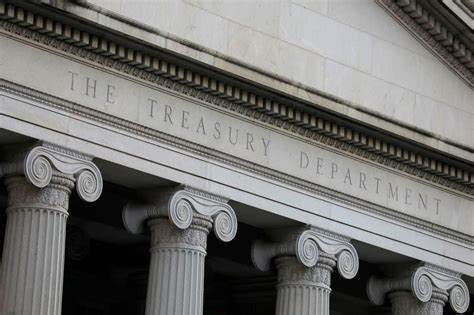U.S. Treasury’s Anticipated $1 Trillion Borrowing in Q3
In a significant financial projection, the U.S. Treasury Department has announced plans to borrow more than $1 trillion in the upcoming third quarter of the fiscal year. This substantial borrowing is expected due to various economic factors and demands on the federal budget.
Understanding the Need for Borrowing
The requirement for such a large-scale borrowing stems primarily from ongoing governmental operations and expenditures. The U.S. government regularly engages in borrowing to manage its day-to-day financial obligations, including social programs, infrastructure projects, and other essential services.
One major factor is the persistent federal deficits. When expenditures surpass revenues, the government must raise funds through borrowing, leading to the issuance of Treasury securities. Expectations indicate that the ongoing payments from COVID-19 relief initiatives, coupled with rising interest rates and inflation, are contributing to a higher borrowing necessity for the U.S. Treasury.
Impact of Economic Conditions
Several economic indicators have influenced this projection of borrowing. The Federal Reserve’s monetary policy, aimed at curbing inflation, has led to increased interest rates. Higher interest rates can potentially elevate the cost of borrowing for the government, requiring more funds to cover interest payments on existing debt.
Moreover, inflation has increased the cost of goods and services, pressuring the federal budget further. As the prices rise, more funding is required to maintain existing programs, amplifying the need for increased borrowing.
The Role of Treasury Securities
To finance its borrowing needs, the U.S. Treasury issues a variety of securities, including Treasury bonds, bills, and notes. These instruments are attractive to investors seeking safe and reliable investment options. As the government continues to borrow, the issuance of these securities is likely to rise, enhancing the overall supply in the market.
Investors typically view Treasury securities as a low-risk investment, given the backing of the U.S. government. This perception aids in maintaining a stable demand, even during periods of increased borrowing.
Interest Rates and Government Debt
As the Treasury increases its borrowing, a crucial component to consider is the impact on interest rates. Typically, when government borrowing escalates, it can lead to an increase in interest rates across the economy. However, the current environment presents a complex picture, as the Federal Reserve’s policies attempt to balance inflation control with the overall health of the economic landscape.
Rising interest rates can affect various sectors, from mortgages to corporate loans, influencing overall economic growth. If borrowing costs for businesses and consumers increase, there may be broader implications for spending and investment across the economy.
Future Financial Outlook
As the U.S. Treasury looks ahead, the prospect of continual borrowing remains. Projections indicate that this trend may continue if federal deficits persist and if the government expands its spending initiatives.
The need for strategic fiscal policies is crucial as the U.S. navigates through these challenging economic landscapes. The attention on managing the national debt, while ensuring the government’s capacity to fund essential services, will play a significant role in shaping the future economic landscape.
In the face of potential challenges from increased borrowing, analysts and policymakers will continue to monitor the financial markets closely to assess the implications of these actions on the broader economy.
Overall, the anticipated borrowing of over $1 trillion in the upcoming third quarter is not merely a statistic; it signifies the intricate relationship between government spending, economic conditions, and financial markets. The dynamic nature of these elements will be pivotal in determining the U.S. economic trajectory in the coming months.
